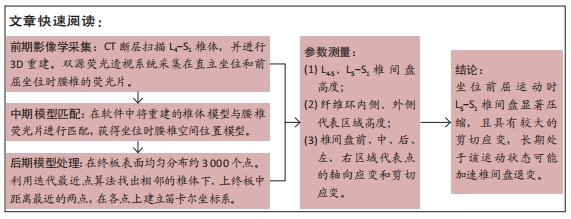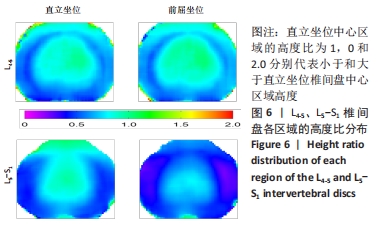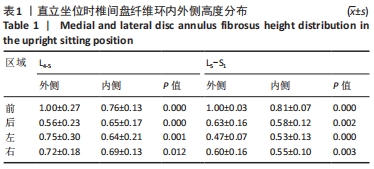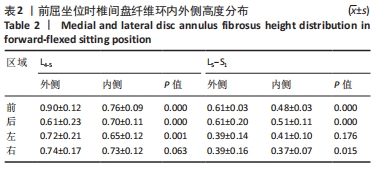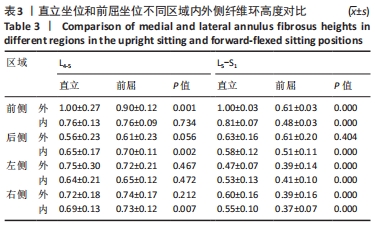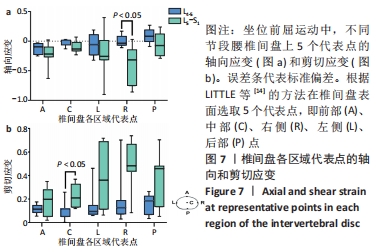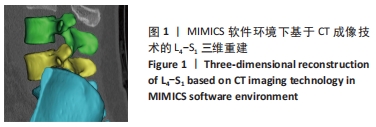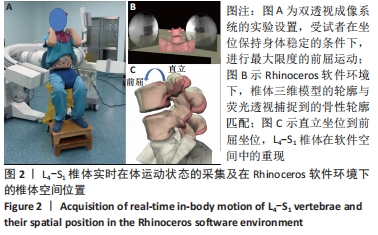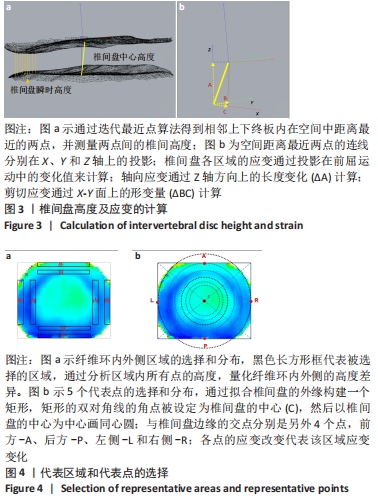[1] PHIMPHASAK C, SWANGNETR M, PUNTUMETAKUL R, et al. Effects of seated lumbar extension postures on spinal height and lumbar range of motion during prolonged sitting. Ergonomics. 2016;59(1):112-120.
[2] BERGER-PASTERNAK B, BRYLKA D, SIPKO T. Lumbar Spine Kinematics in Asymptomatic People When Changing Body Position From Sitting to Standing. J Manipulative Physiol Ther. 2021;44(2):113-119.
[3] PATWARDHAN AG, SIELATYCKI JA, HAVEY RM, et al. Loading of the lumbar spine during transition from standing to sitting: effect of fusion versus motion preservation at L4-L5 and L5-S1. Spine J. 2021;21(4):708-719.
[4] SPYROPOULOS P, PAPATHANASIOU G. GEORGOUDIS G, et al. Prevalence of low back pain in greek public office workers. Pain Physician. 2007;10(5):651-659.
[5] FRYER JC, QUON JA, SMITH FW. Magnetic resonance imaging and stadiometric assessment of the lumbar discs after sitting and chair-care decompression exercise: a pilot study. Spine J. 2010;10(4):297-305.
[6] BLÁFOSS R, SKOVLUND SV, LÓPEZ-BUENO R, et al. Is hard physical work in the early working life associated with back pain later in life? A cross-sectional study among 5700 older workers. BMJ Open. 2020;10(12):e040158.
[7] 胡永善.下腰痛的生物力学特点及康复[J].颈腰痛杂志,2004,25(2):73-75.
[8] HOLLINGSWORTH NT, WAGNER DR. The stress and strain states of the posterior annulus under flexion. Spine (Phila Pa 1976). 2012;37(18):E1134-E1139.
[9] GALBUSERA F, NIEMEYER F, TAO Y, et al. ISSLS Prize in Bioengineering Science 2021: in vivo sagittal motion of the lumbar spine in low back pain patients-a radiological big data study. Eur Spine J. 2021;30(5):1108-1116.
[10] JACOBSEN S, SONNE-HOLM S, ROVSING H, et al. Degenerative lumbar spondylolisthesis: an epidemiological perspective: the Copenhagen Osteoarthritis Study. Spine (Phila Pa 1976). 2007;32(1):120-125.
[11] EVANS W, JOBE W, SEIBERT C. A cross-sectional prevalence study of lumbar disc degeneration in a working population. Spine (Phila Pa 1976). 1989;14(1):60-64.
[12] LIN CC, LU TW, WANG TM, et al. In vivo three-dimensional intervertebral kinematics of the subaxial cervical spine during seated axial rotation and lateral bending via a fluoroscopy-to-CT registration approach. J Biomech. 2014;47(13):3310-3317.
[13] WANG S, XIA Q, PASSIAS P, et al. Measurement of geometric deformation of lumbar intervertebral discs under in-vivo weightbearing condition. J Biomech. 2009;42(6):705-711.
[14] LITTLE JP, PEARCY MJ, PETTET GJ. Parametric equations to represent the profile of the human intervertebral disc in the transverse plane. Med Biol Eng Comput. 2007;45(10):939-945.
[15] TAVANA S, MASOUROS SD, BAXAN N, et al. The Effect of Degeneration on Internal Strains and the Mechanism of Failure in Human Intervertebral Discs Analyzed Using Digital Volume Correlation (DVC) and Ultra-High Field MRI. Front Bioeng Biotechnol. 2021;8:610907.
[16] LIU Q, WANG TY, YANG XP, et al. Strain distribution in the intervertebral disc under unconfined compression and tension load by the optimized digital image correlation technique. Proc Inst Mech Eng H. 2014;228(5):486-493.
[17] HEUER F, SCHMIDT H, WILKE HJ. The relation between intervertebral disc bulging and annular fiber associated strains for simple and complex loading. J Biomech. 2008;41(5):1086-1094.
[18] 潘承良,白芃,韩青,等.中国东北地区人群腰部节段椎间盘形态学参数CT三维测量及应用[J].中国实验诊断学,2019,23(11):1883-1887.
[19] BYRNE RM, AIYANGAR AK, ZHANG X. A Dynamic Radiographic Imaging Study of Lumbar Intervertebral Disc Morphometry and Deformation In Vivo. Sci Rep. 2019;9(1):15490.
[20] SONG Y, WEN WQ, XU J, et al. Kinematic Characteristics and Biomechanical Changes of Lower Lumbar Facet Joints Under Different Loads. Orthop Surg. 2021; 13(3):1047-1054.
[21] SIEPE CJ, KORGE A, GROCHULLA F, et al. Analysis of post-operative pain patterns following total lumbar disc replacement: results from fluoroscopically guided spine infiltrations. Eur Spine J. 2008;17(1):44-56.
[22] SIEPE CJ, MAYER HM, HEINZ-LEISENHEIMER M, et al. Total lumbar disc replacement: different results for different levels. Spine (Phila Pa 1976). 2007;32(7):782-790.
[23] 王少锋,孟小庆,吴占勇,等.腰椎CT矢状面屈曲角、终板屈曲深度和双侧腰大肌横断面积差值诊断腰椎间盘突出症(LDH)的价值及与退变程度的关系[J].影像科学与光化学,2021,39(3):386-390.
[24] 孙卓然,姜帅,邹达,等.国人青年人群坐-立位脊柱-骨盆矢状位序列变化研究[J].中国脊柱脊髓杂志,2018,28(4):325-329.
[25] HARRISON DD, HARRISON SO, CROFT AC, et al. Sitting biomechanics part I: review of the literature. J Manipulative Physiol Ther. 1999;22(9):594-609.
[26] HUANG M, HAJIZADEH K, GIBSON I, et al. Analysis of compressive load on intervertebral joint in standing and sitting postures. Technol Health Care. 2016; 24(2):215-223.
[27] LEDET EH, TYMESON MP, DIRISIO DJ, et al. Direct real-time measurement of in vivo forces in the lumbar spine. Spine J. 2005;5(1):85-94.
[28] ADAMS MA, HUTTON WC. The effect of posture on the role of the apophysial joints in resisting intervertebral compressive forces. J Bone Joint Surg Br. 1980; 62(3):358-362.
[29] WANG Y, LI D, ZHU M, et al. Lumbar Facet Tropism on Different Facet Portions and Asymmetry Between Ipsilateral Cephalad and Caudad Portions: Their Correlations With L4/5 and L5/S1 Lumbar Disc Herniation. Spine (Phila Pa 1976). 2020;45(20):E1312-E1318.
[30] ZHOU Z, NI HJ, ZHAO W, et al. Percutaneous Endoscopic Lumbar Discectomy via Transforaminal Approach Combined with Interlaminar Approach for L4/5 and L5/S1 Two-Level Disc Herniation. Orthop Surg. 2021;13(3):979-988.
[31] GAWRI R, ROSENZWEIG DH, KROCK E, et al. High mechanical strain of primary intervertebral disc cells promotes secretion of inflammatory factors associated with disc degeneration and pain. Arthritis Res Ther. 2014;16(1):R21.
[32] GRUEVSKI KM, CALLAGHAN JP. The effect of age, prolonged seated work and sex on posture and perceived effort during a lifting task. Appl Ergon. 2020;89:103198.
|
